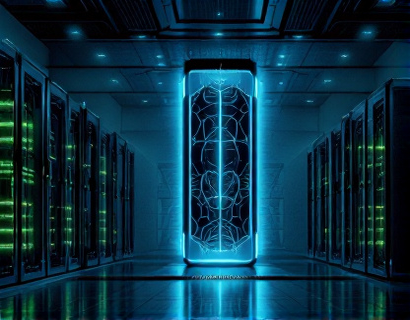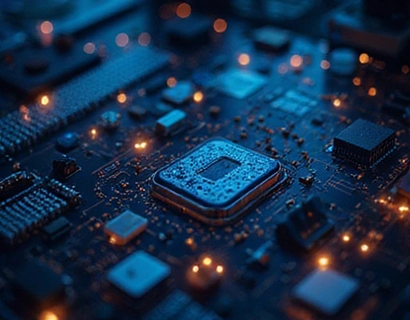Blockchain-Enabled Registry Software: Revolutionizing Data Management with Enhanced Security and Efficiency
In the rapidly evolving landscape of data management, the integration of blockchain technology has emerged as a transformative force, offering unparalleled security, transparency, and efficiency. This article delves into the realm of blockchain-enabled registry software, exploring how it is revolutionizing the way professionals and enthusiasts approach data management, security, and digital transformation. By leveraging the inherent properties of blockchain, such as decentralization, immutability, and cryptographic security, this software is redefining the standards for registry management.
Understanding Blockchain Technology
Before diving into the specifics of blockchain-enabled registry software, it is essential to grasp the fundamental concepts of blockchain technology. At its core, a blockchain is a distributed ledger that records transactions across multiple computers in such a way that the registered transactions cannot be altered retroactively. This technology ensures that once data is recorded, it becomes nearly impossible to modify or delete, providing a high level of data integrity and security.
Blockchain operates on a peer-to-peer network, where each participant, or node, maintains a copy of the entire ledger. Transactions are grouped into blocks, and each block is linked to the previous one through cryptographic hashes, forming a chain. This linkage ensures that any attempt to alter a block would require changing all subsequent blocks, a task that is computationally infeasible due to the consensus mechanisms in place.
Enhanced Security through Blockchain
One of the most significant advantages of blockchain-enabled registry software is its enhanced security features. Traditional registry systems are often centralized, making them vulnerable to cyber attacks, data breaches, and unauthorized access. In contrast, blockchain's decentralized nature distributes the data across a network of nodes, eliminating single points of failure and reducing the risk of security breaches.
Each transaction in a blockchain is encrypted and verified through complex algorithms, ensuring that only authorized parties can access or modify the data. This cryptographic security ensures that the data remains tamper-proof, providing a high level of trust and reliability. For professionals in data management, this means that sensitive information can be stored and shared with confidence, knowing that it is protected against unauthorized alterations.
Transparency and Traceability
Blockchain technology inherently promotes transparency and traceability, two critical aspects of effective registry management. Every transaction on the blockchain is recorded with a timestamp and a unique cryptographic signature, creating an immutable audit trail. This transparency allows all stakeholders to verify the authenticity and integrity of the data, reducing the risk of fraud and errors.
For registry management professionals, this level of transparency is invaluable. It enables them to track the history of records, ensuring that all changes are documented and can be traced back to their origin. This traceability not only enhances accountability but also builds trust among users, as they can verify the accuracy and completeness of the data.
Efficiency and Automation
Beyond security and transparency, blockchain-enabled registry software significantly improves efficiency through automation and streamlined processes. Smart contracts, self-executing contracts with the terms directly written into code, can automate routine tasks and workflows, reducing the need for manual intervention and minimizing the potential for human error.
For instance, in property registry management, smart contracts can automatically update ownership records when a property transfer is completed, based on predefined conditions. This automation not only speeds up the process but also ensures that all steps are followed correctly, reducing the risk of delays and disputes.
Case Studies and Real-World Applications
The potential of blockchain-enabled registry software is evident in various real-world applications across different industries. In the real estate sector, blockchain-based property registries have been implemented to streamline property transactions, reduce fraud, and enhance transparency. For example, a pilot project in Estonia has successfully used blockchain to manage land registries, resulting in faster processing times and increased trust among stakeholders.
In the supply chain industry, blockchain-enabled registry software is being used to track the provenance and movement of goods, ensuring authenticity and compliance with regulations. Companies like IBM and Maersk have collaborated on a blockchain platform called TradeLens, which provides a transparent and secure way to manage global trade documentation, reducing paperwork and improving efficiency.
Challenges and Considerations
While the benefits of blockchain-enabled registry software are clear, there are also challenges and considerations that organizations must address. One of the primary concerns is the scalability of blockchain networks. Traditional blockchain platforms can face performance issues as the volume of transactions increases, leading to slower processing times and higher costs.
To overcome this, many blockchain solutions are moving towards more scalable architectures, such as sharding and layer 2 protocols, which allow for higher transaction throughput without compromising security. Additionally, the regulatory landscape for blockchain technology is still evolving, and organizations must navigate varying legal requirements and compliance standards.
Future Trends and Innovations
The future of blockchain-enabled registry software is promising, with ongoing innovations set to address current challenges and expand its applications. One area of focus is the development of interoperable blockchain networks, allowing different blockchain systems to communicate and share data seamlessly. This interoperability will enhance the versatility and utility of blockchain-based registries, making them more accessible and useful across various sectors.
Another exciting development is the integration of blockchain with other emerging technologies, such as the Internet of Things (IoT) and artificial intelligence (AI). For instance, blockchain can provide a secure and transparent way to manage and verify data generated by IoT devices, ensuring data integrity and privacy. Similarly, AI can be used to analyze blockchain data, providing insights and predictive analytics that can further enhance decision-making processes.
Conclusion
Blockchain-enabled registry software represents a significant leap forward in data management, offering enhanced security, transparency, and efficiency. By leveraging the unique properties of blockchain, organizations can build trust, streamline processes, and ensure the integrity of their data. As the technology continues to evolve and mature, its applications will expand, transforming the way professionals and enthusiasts approach registry management and digital transformation.
For those in the fields of data security, IT development, and business process optimization, embracing blockchain-enabled solutions is not just an option but a necessity. By staying ahead of the curve, organizations can harness the full potential of blockchain to drive innovation and maintain a competitive edge in an increasingly digital world.










































